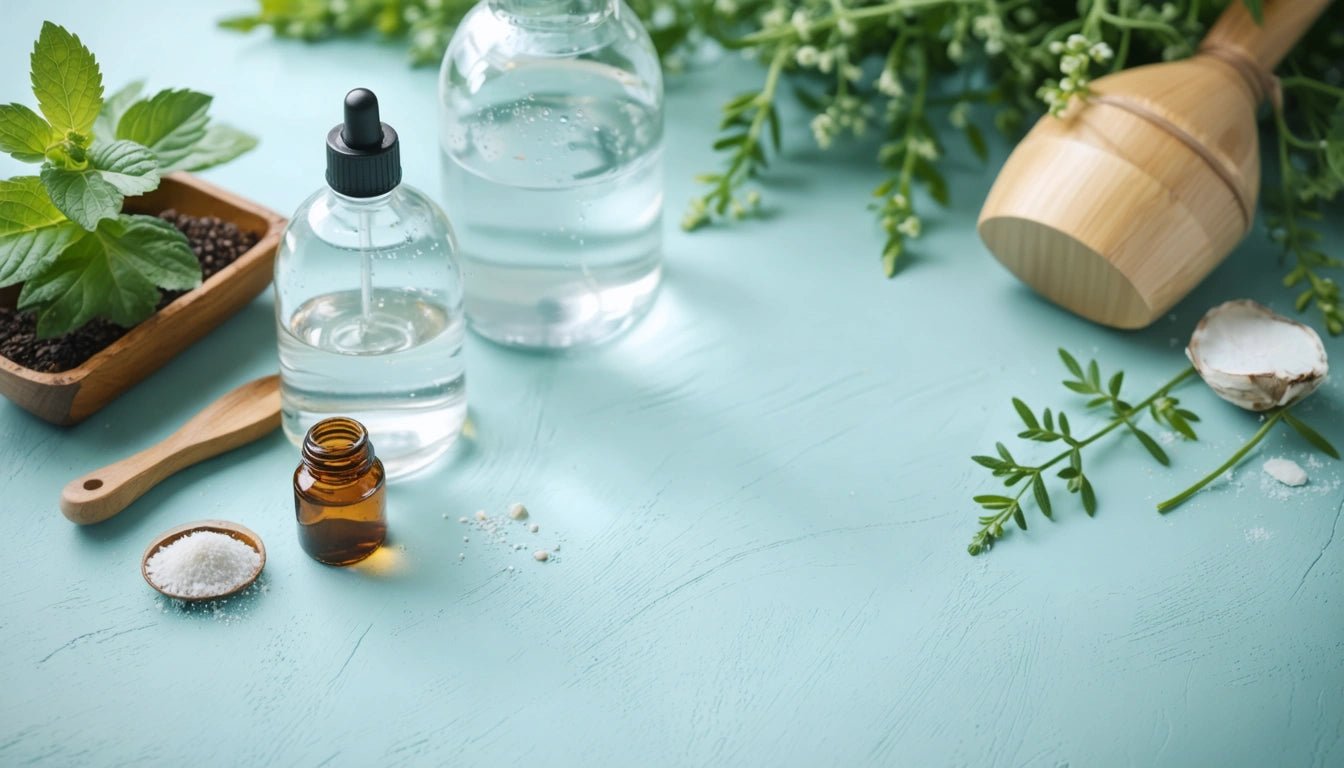Table of Contents
How to Make Your Own DIY Face Toner at Home
Creating your own DIY face toner allows you to customize ingredients specifically for your skin concerns while avoiding harsh chemicals found in many commercial products. Homemade facial toners can balance your skin's pH, remove residual impurities after cleansing, and prepare your skin to better absorb subsequent skincare products.
Benefits of Homemade Toners
DIY skin toners offer several advantages over store-bought alternatives. They typically cost less, contain fewer preservatives, and can be adjusted based on seasonal skin changes. According to this comprehensive guide on DIY skincare, natural toners can effectively address issues like excess oil, dryness, and uneven skin tone without the potentially irritating synthetic fragrances or alcohol found in commercial products.
The primary benefits include:
- Control over ingredients and concentrations
- Cost-effectiveness compared to premium brands
- Ability to customize based on skin's changing needs
- Reduction in packaging waste
- Confidence in knowing exactly what touches your skin
Essential Ingredients for DIY Facial Toners
Base Ingredients
Most homemade toners start with one of these bases:
- Distilled water (neutral base that won't introduce contaminants)
- Witch hazel (natural astringent with anti-inflammatory properties)
- Rose water (soothing and hydrating)
- Green tea (antioxidant-rich)
- Apple cider vinegar (balances pH, dilute 1:3 with water)
Beneficial Additives
Enhance your DIY facial toner with these ingredients based on skin needs:
- Aloe vera gel (soothing, hydrating)
- Essential oils (tea tree for acne, lavender for calming)
- Glycerin (humectant for moisture retention)
- Vitamin E oil (antioxidant and preservative)
- Hydrosols (floral waters with gentle properties)
Basic DIY Toner Recipes for Different Skin Types
For Oily/Acne-Prone Skin
Combine:
- 1/4 cup witch hazel (alcohol-free)
- 1/4 cup brewed green tea (cooled)
- 5 drops tea tree essential oil
- 5 drops of lemon essential oil (use only at night as it can cause photosensitivity)
For Dry/Sensitive Skin
Mix together:
- 1/2 cup rose water
- 1 tablespoon aloe vera gel
- 1 teaspoon glycerin
- 3 drops chamomile essential oil
For Combination Skin
Blend:
- 1/4 cup witch hazel
- 1/4 cup rose water
- 1 tablespoon aloe vera gel
- 3 drops lavender essential oil
These simple recipes can be further customized based on specific needs. For more inspiration on creating personalized skincare products, check out this guide to DIY cosmetics which provides additional formulation tips.
Application Methods and Storage Solutions
Proper application and storage are crucial for maintaining the efficacy of your DIY face toner.
Application Options
- Cotton pads (most common but can waste product)
- Spray bottles (for fine misting application)
- Clean fingertips (gentle patting method)
- Reusable cotton rounds (eco-friendly alternative)
Storage Containers
When storing your homemade facial toner, consider these options:
- Dark glass bottles (protect light-sensitive ingredients)
- Spray bottles (convenient for application)
- Refrigeration (extends shelf life of preservative-free formulas)
Since homemade toners lack commercial preservatives, they typically last 1-2 weeks when refrigerated. Safety experts recommend using appropriate containers that reduce the risk of accidental ingestion, especially in households with young children.
Safety Considerations for Homemade Skincare
While DIY skin toners are generally safe, certain precautions should be observed:
- Always perform patch tests before full application
- Research essential oil safety (many should be used at 1% dilution or less)
- Watch for signs of contamination (change in smell, color, or texture)
- Use proper measuring tools for accurate formulations
- Label containers with ingredients and date made
If you have existing skin conditions or allergies, consult with a dermatologist before using homemade skincare products. For those interested in expanding their DIY skincare routine, this guide to DIY face masks offers complementary treatments that work well alongside toners.
Integrating Toners Into Your Complete Skincare Routine
A DIY facial toner works best as part of a comprehensive skincare regimen. The ideal sequence is:
- Cleanser (removes surface impurities)
- Toner (balances pH and prepares skin)
- Serums (targeted treatments)
- Moisturizer (hydrates and seals)
- Sunscreen (daytime protection)
For maximum benefits, apply toner to clean, slightly damp skin. This allows for better absorption and distribution of the active ingredients. As noted in this ultimate skincare guide, consistency is key to seeing results from any skincare routine.
Creating your own DIY face toner empowers you to take control of what goes onto your skin while potentially saving money and reducing environmental impact. By understanding the basic principles of formulation and following proper safety protocols, you can craft effective, personalized toners that address your unique skincare needs.



















